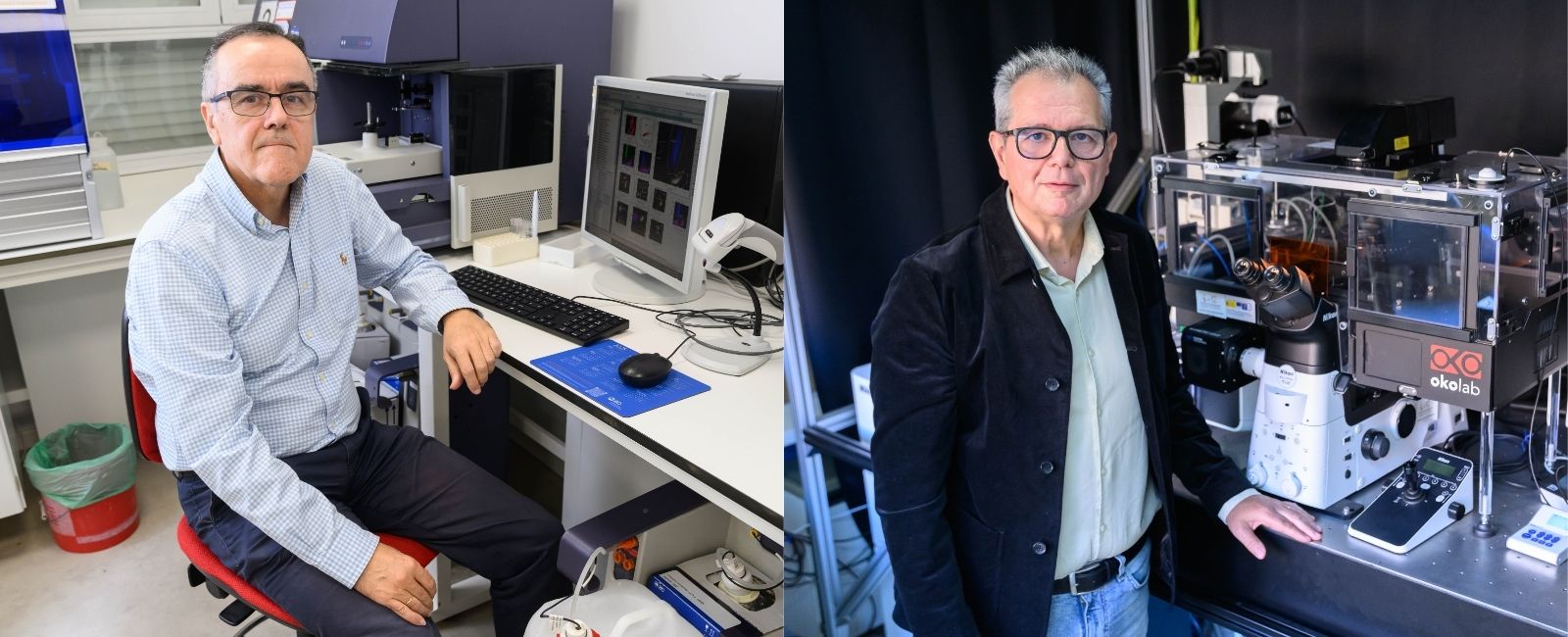RESEARCH TEAM
Principal investigator: Manuel Ramírez Orellana (Hospital Infantil Universitario Niño Jesús).
Team member: Francisco Monroy Muñoz (Universidad Complutense de Madrid).
DESCRIPTION
Manuel Ramírez Orellana is a research-focused physician, and Francisco Monroy is a physicist trained in applying mechanics to the measurement of forces in cells and molecules. The two have worked together for years to apply the emerging field of nanomechanics to research on child leukemia. The project starts from the idea that a genetic predisposition to cancer owes to the influence of physical, mechanical variables, so will focus on identifying and understanding these variables and the process they trigger whereby a healthy cell turns cancerous. Understanding this physical process will ultimately make it possible to intervene in its biology. And since the process is a dynamic one, the team will employ a living, animal model of leukemia onset.
They will use optical, microfluidic and computational microscopy to analyze multiple parameters in diverse regions of the cell and bone marrow where leukemia has been found to be present. “We start from the premise that physics governs all that happens in biology,” Ramírez explains, “so we will be looking for the physical mechanisms that act on, modulate and finally permit a child’s healthy cell to become a leukemia.”
The project – says Monroy – takes the three dimensions of biology, physics and engineering and applies them to cutting-edge technologies, making it possible to process the mechanical information like epigenomics and transcriptomics generated in Manuel’s lab. “We have an animal model to track the progression from health to leukemia, obtain samples and map the mechanome,” adds Ramírez, “and once deciphered, we will validate this ‘code’ in primary samples of children with the disease.”
Both researchers reference the spirit of the call in insisting that their goal is to understand the physical foundations of disease development. Further, as theirs is a dynamic model, it will be important to identify not just where but also when to act. They are confident that, with this knowledge, it will eventually be possible to intervene in the process, with applications in prevention, diagnosis and treatment.

